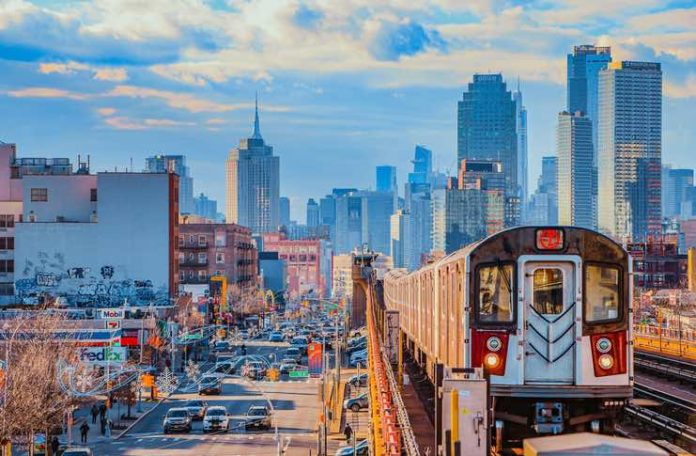There are a handful of benefits that could come with better public transit including boosting economies, promoting the well-being of society, and even helping combat climate change.
Nonetheless, if these changes are to come into fruition, it isn’t sufficient to merely build several bus lines. Public transit’s future must be dependable, competent, and accessible to the public. And while these are admirable objectives, they aren’t easy to achieve.
In this post, as part of our Travel Blog posts, in this article we’ll delve into the future of public transit. Fortunately, there are already many valuable practices and even more exciting technologies and approaches that can help attain these huge goals.
They include:
Automated Fare Collection
In the recent past, transit agencies transitioned from card/paper fare collection to automated means of fare collection. Among the few contributing factors for this was the pandemic, since the transit agencies were looking for a contactless payment method.
With that in mind, in 2024, many transit agencies will adapt mobile ticketing as a more efficient and futuristic payment method. Most of them are seeking solutions that call for the riders to download an App on their smartphones.
Firms like Google are recently collaborating with transit organizations to offer a means for customers to pay from their smartphones. For instance, Google Pay will let riders pay and access their ride history, and this payment method has been adapted by over 400 cities.
Watch this video to get a glimpse of how it will work:
Accessibility Through Mobility Hubs
It is imperative that public transit have fast and flexible services to appeal to riders. Moreover, lessening the number of stops can be handy in ensuring riders reach their destinations much faster. Besides, with fewer stops, top-notch bus stations can be set up with improved lighting, and better climate control to keep riders comfortable and safe.
On top of that, stations can handle accessibility issues, and help people with disabilities to board the buses, for instance, by setting up an area from which they can board, as opposed to requiring them to get assistance from other passengers.
Such, more purposely built bus stations can be turned into mobility hubs, where riders can also find other transportation forms. This could be anything from offering bike storage services to charging spots for e-scooters, bikes, and even cars.
Plus, station and route planning should also consider accessing other sectors like hospitals, since they are often left without proper access while using public transit.
Watch this video to get a glimpse:
Use of Apps
Prevalently, the use of Apps will promote reliability and better planning. Fortunately, transit apps are now quite common, and they include helpful information like route planning, bus schedules, service shift alerts, information on arrivals, mobile ticketing, and so much more!
Research done on transit apps revealed that they boost passengers’ insight on transit, in that they help riders lessen waiting time at bus stops and could possibly improve rider experience.
That said, most of us might consider rideshare, with Lyft or Uber, which are more flexible but as indicated in a report here by Avian Law Group, there are numerous traffic fatalities linked to such services, due to their need to guarantee fast response times for customers.
Mobile ticketing is also cheaper for cities, easier for riders, and boosts travel time. Offering real-time information and alerts on public transportation helps you plan ahead and reduces time wastage.
Lastly, route planning gives riders useful navigation information for comfort and efficiency.
Accepting New Technology for Public Transit
Public transit experts are encouraging agencies to move with the technology tides, as this is the future. Buses don’t have a good reputation in many areas since they are usually slow and produce plenty of greenhouse gases.
However, new eco-friendly bus options are available on the market, along with electric buses, which are becoming a preferred option across the country. Moreover, in-charging technology is an upcoming technology that could transform the public transit sector.
It’s especially advantageous in areas where climate decreases the period a battery can run on a full charge. Again, advancements in battery technology are decreasing costs and improving dependability.
Using self-sufficient driving technologies for public transport could also increase both passenger and pedestrian safety by avoiding collisions.
Prioritize Eco-Friendliness
While decarbonization isn’t something new, it is becoming increasingly popular, and with good reason. The emission of greenhouse gasses is something transit agencies are taking seriously. This is partially due to the Bipartisan Infrastructure Law’s subsidy.
This subsidy highlights supporting eco-friendly transportation, and it has helped numerous agencies start shifting from greenhouse gas production to renewable energy.
Watch this video to see how sustainable transportation is being implemented in Paris:
Conclusion
These trends are indeed the future of public transit. The subsidy helps improve transit vehicles, and it positively affects the environment. Having Apps and other convenient technology that gives you access to the transit schedule and alerts you when needed will help attract more customers and improve your experience.
So, whether you intend to use public transit for going to and from work, or for your weekend getaway, you can feel safe knowing that this sector is improving for your comfort and safety!










 Sarah Knapp is a Brooklyn based entrepreneur whose love for the outdoors and community building led her to the October 2013 creation of OutdoorFest. She has a BA in History, is a Wilderness First Responder and a NY state hiking, camp and boating guide. Her proudest achievement to date is reading the Aeneid in Latin.
Sarah Knapp is a Brooklyn based entrepreneur whose love for the outdoors and community building led her to the October 2013 creation of OutdoorFest. She has a BA in History, is a Wilderness First Responder and a NY state hiking, camp and boating guide. Her proudest achievement to date is reading the Aeneid in Latin.  Allison was one of our first top writers and Chief Editor but is no longer working with offMetro. Allison is a native New Yorker, who has lived in Rome, Tuscany, Melbourne, Toronto and Los Angeles. She frequently contributed travel pieces to Family Travel Forum, using her own children as guinea pigs as they travel the globe. She never missed a chance to sample local delicacies, as her love for travel goes hand-in-hand with her love for food and wine.
Allison was one of our first top writers and Chief Editor but is no longer working with offMetro. Allison is a native New Yorker, who has lived in Rome, Tuscany, Melbourne, Toronto and Los Angeles. She frequently contributed travel pieces to Family Travel Forum, using her own children as guinea pigs as they travel the globe. She never missed a chance to sample local delicacies, as her love for travel goes hand-in-hand with her love for food and wine.  Josh Laskin is a freelance travel writer and photographer based in the White Mountains of New Hampshire. When he is not at work or on the road, you can find him in the mountains snowboarding, climbing, hiking, fly fishing, mountain biking, and eating bagel bites.
Josh Laskin is a freelance travel writer and photographer based in the White Mountains of New Hampshire. When he is not at work or on the road, you can find him in the mountains snowboarding, climbing, hiking, fly fishing, mountain biking, and eating bagel bites. Annie is a travel writer, environmentalist, and surfer based in Venice, CA. She heads up our West Coast team, keeps our grammatical errors in check, and makes sure our California writers always have a plan for their next adventure. Follow Annie’s travels @annelisemcb.
Annie is a travel writer, environmentalist, and surfer based in Venice, CA. She heads up our West Coast team, keeps our grammatical errors in check, and makes sure our California writers always have a plan for their next adventure. Follow Annie’s travels @annelisemcb. Carly Pifer is a freelance writer who has been known to follow whims inspired by romantic movie scenes or colorful street style shots to India, Japan, Tunisia and Argentina. After stints living in Seoul, Boston, Paris and Los Angeles, writing and searching for something intangible, she landed somewhat steadily in Brooklyn and has begun to find inspiration in her more immediate surroundings.
Carly Pifer is a freelance writer who has been known to follow whims inspired by romantic movie scenes or colorful street style shots to India, Japan, Tunisia and Argentina. After stints living in Seoul, Boston, Paris and Los Angeles, writing and searching for something intangible, she landed somewhat steadily in Brooklyn and has begun to find inspiration in her more immediate surroundings.  Kate E. O’Hara is a New York based freelance writer and photographer who loves all things food—especially the people who make it and market it. Her writing aims to capture the essence of the food experience; the stories that go well beyond a plate of ingredients. In addition to her love of food, Kate is also known to have a hankering for red wine and craft beer. You can also find Kate on Instagram
Kate E. O’Hara is a New York based freelance writer and photographer who loves all things food—especially the people who make it and market it. Her writing aims to capture the essence of the food experience; the stories that go well beyond a plate of ingredients. In addition to her love of food, Kate is also known to have a hankering for red wine and craft beer. You can also find Kate on Instagram